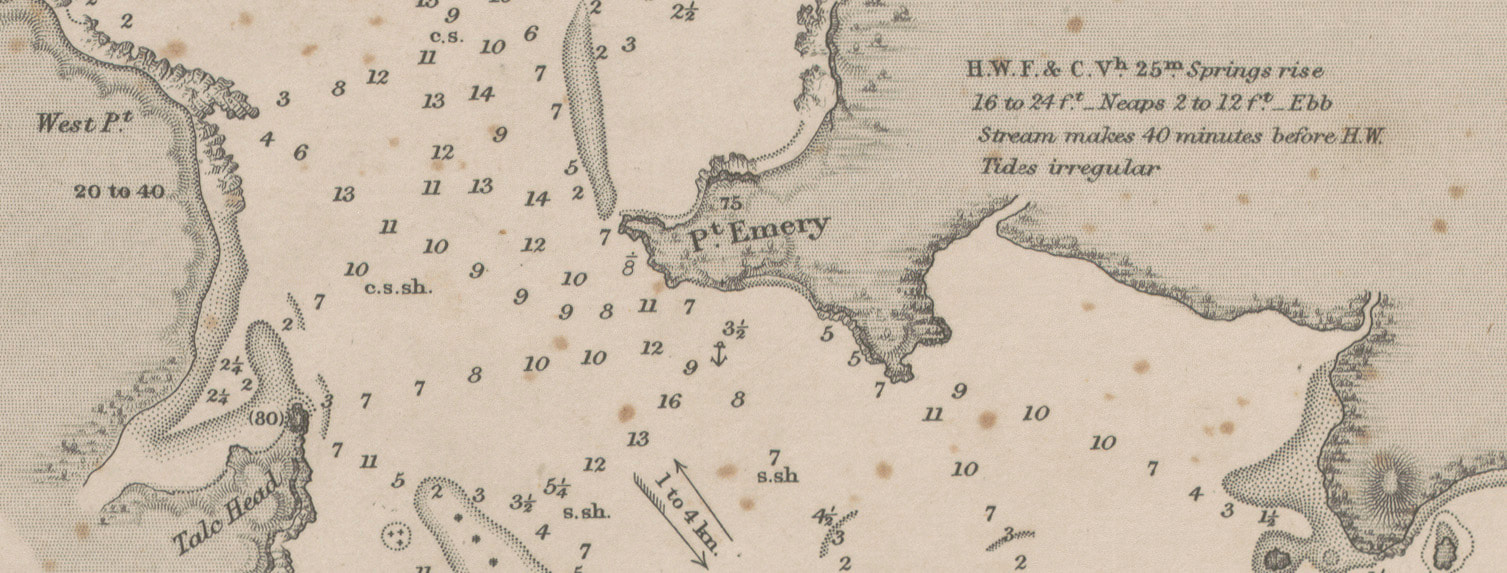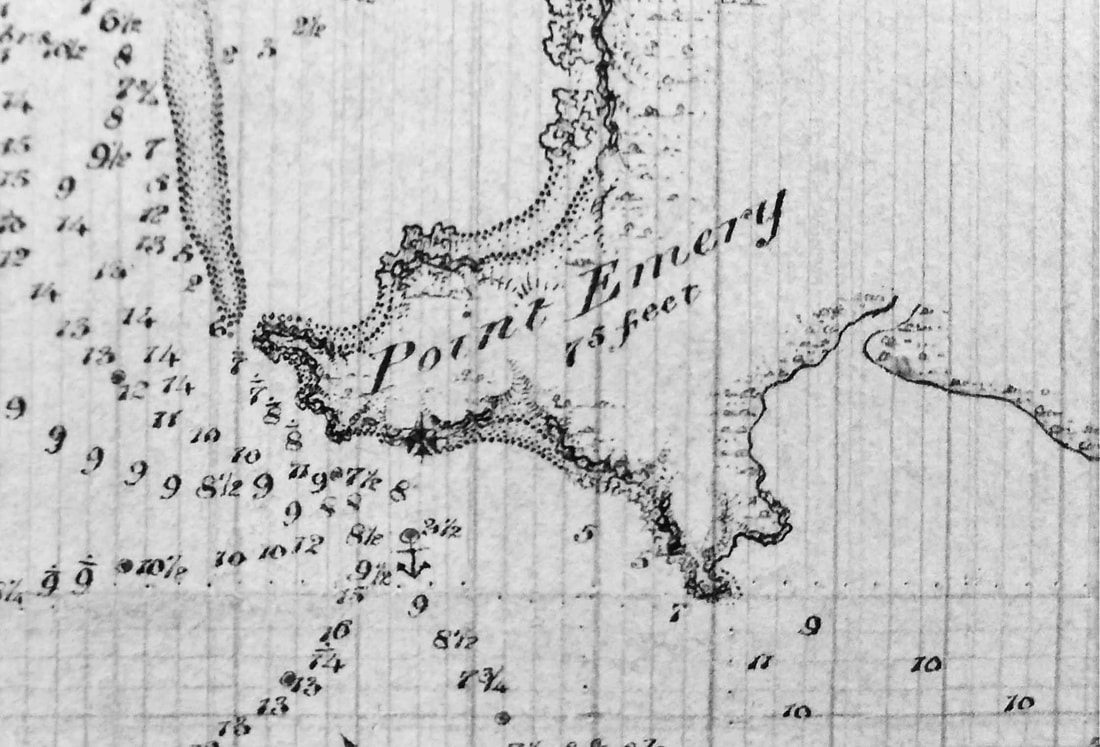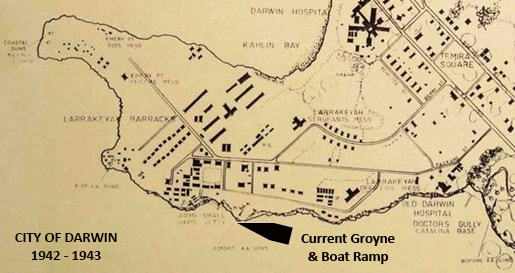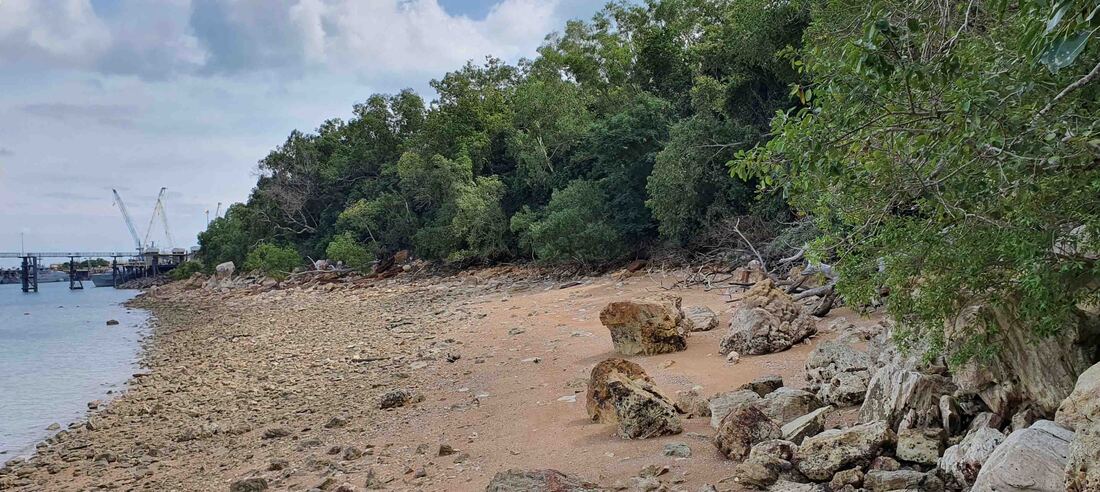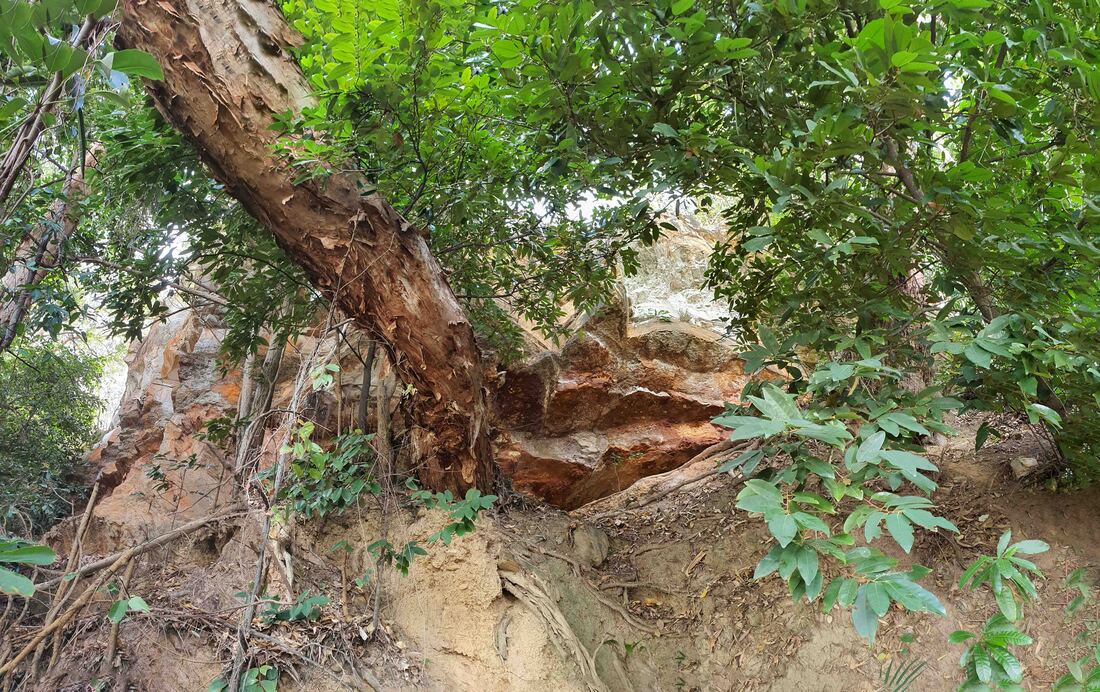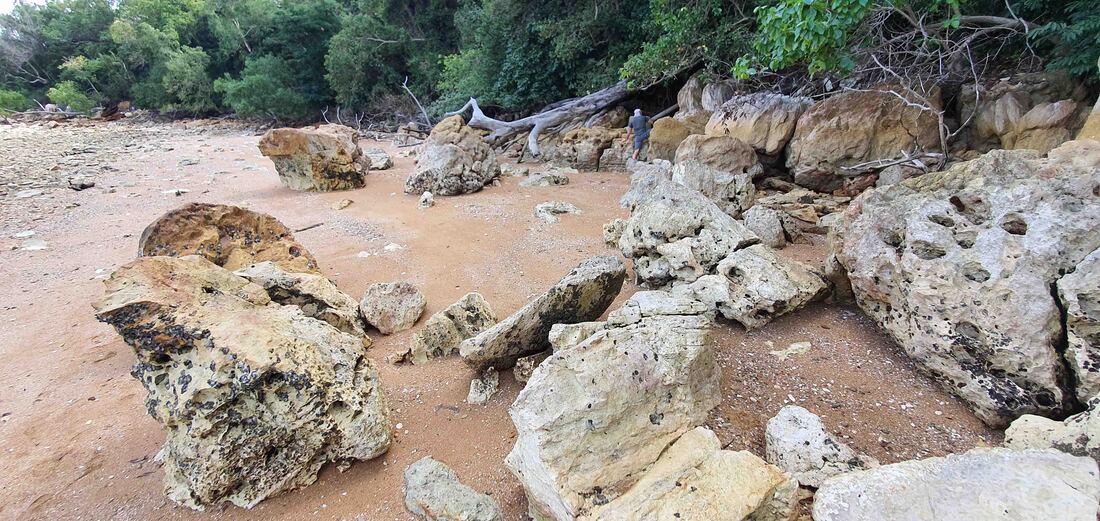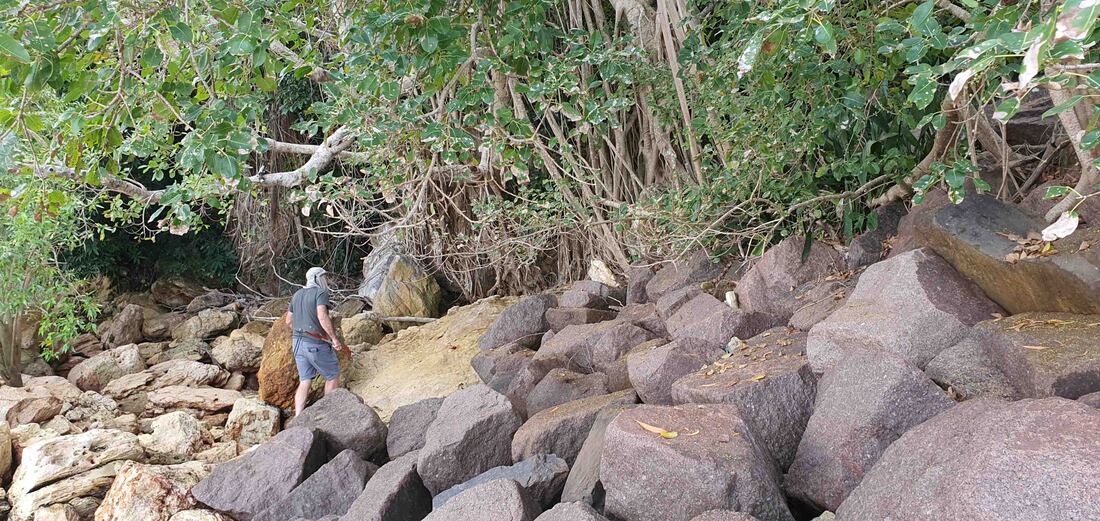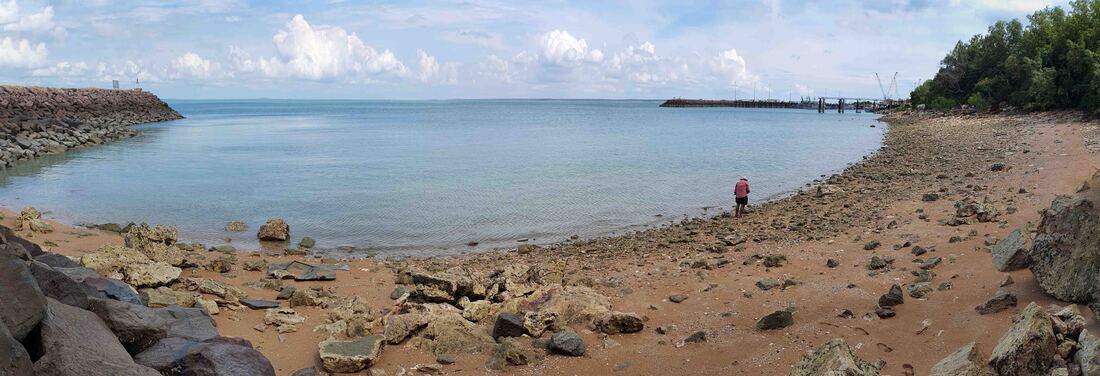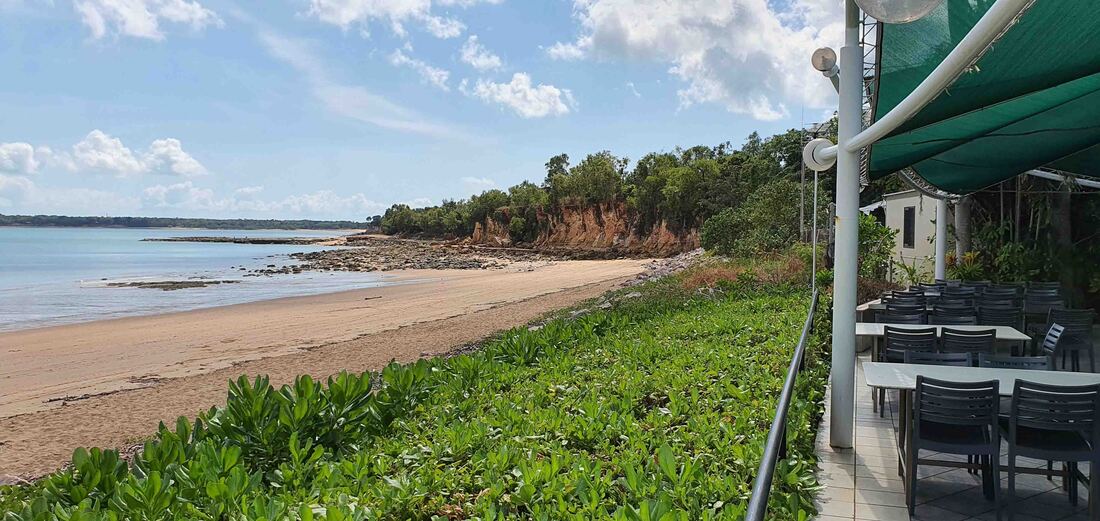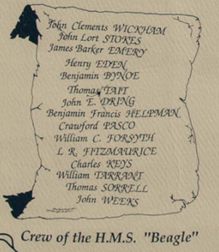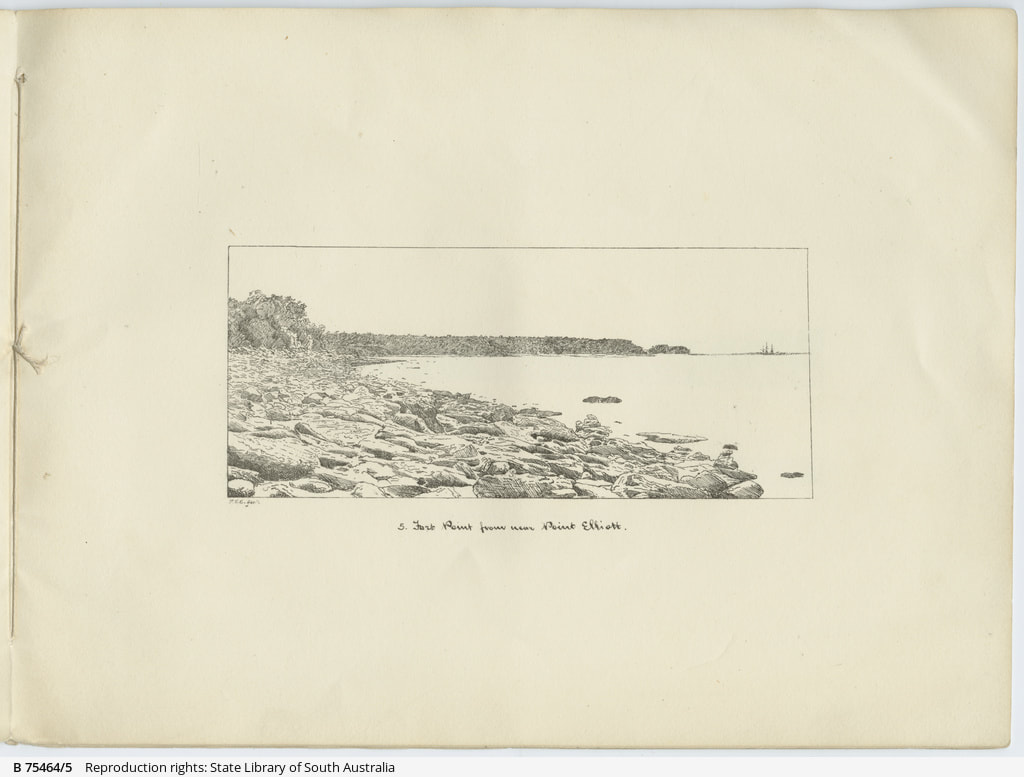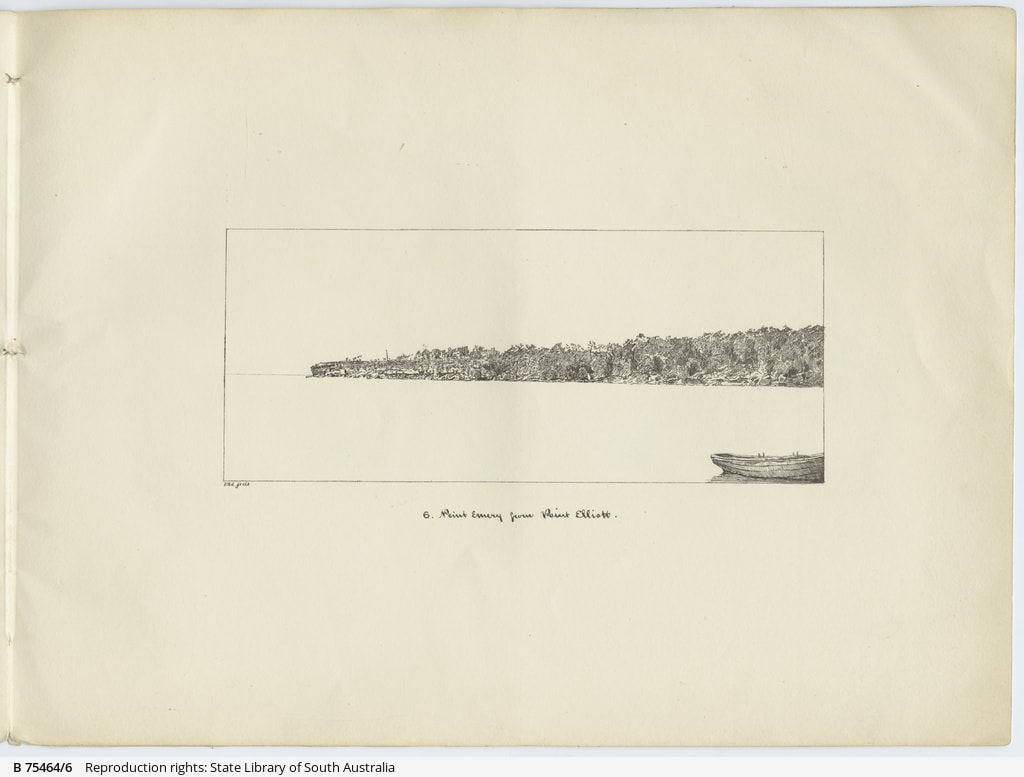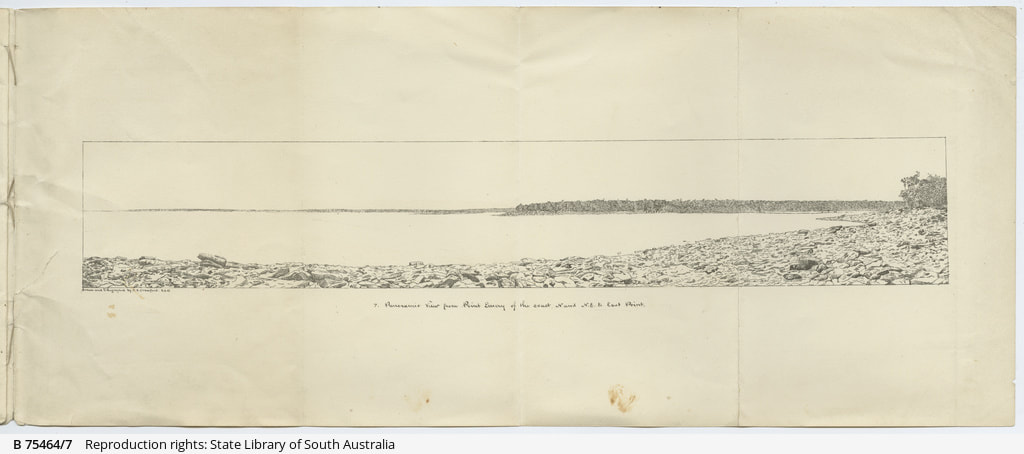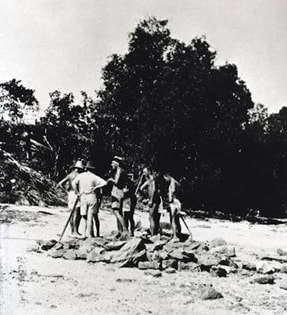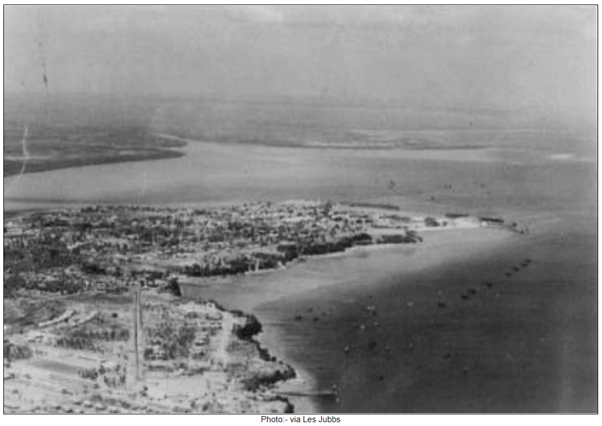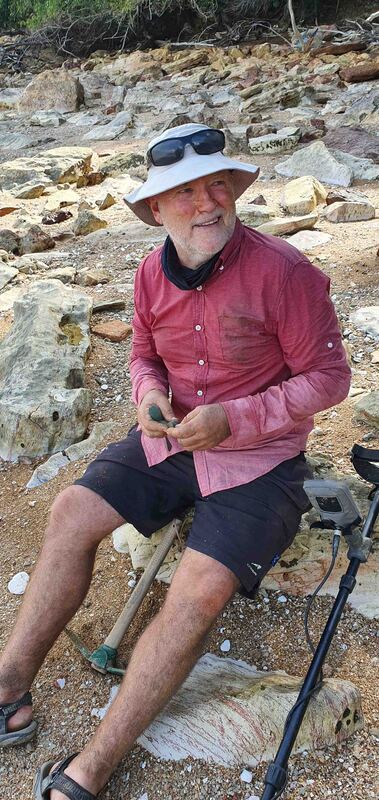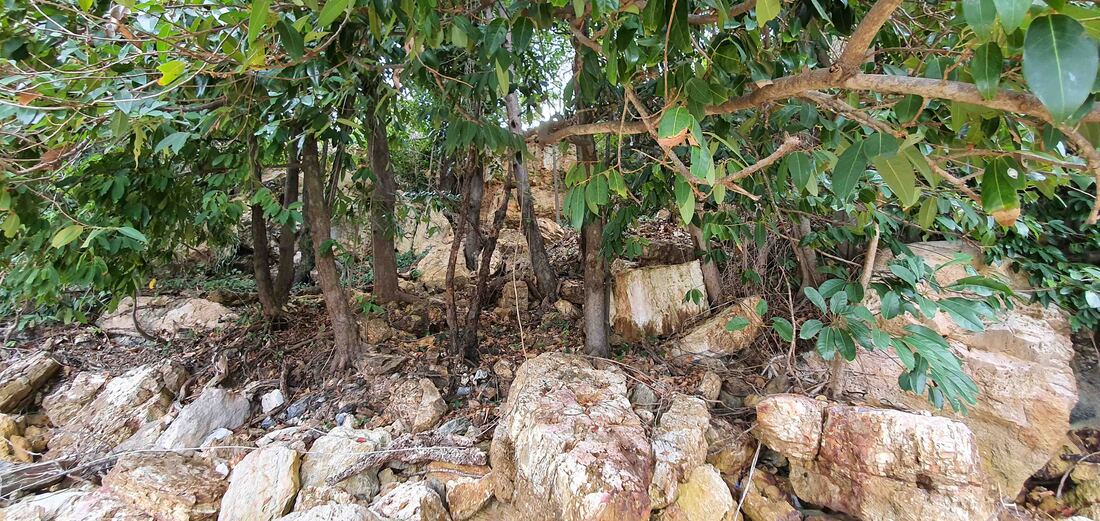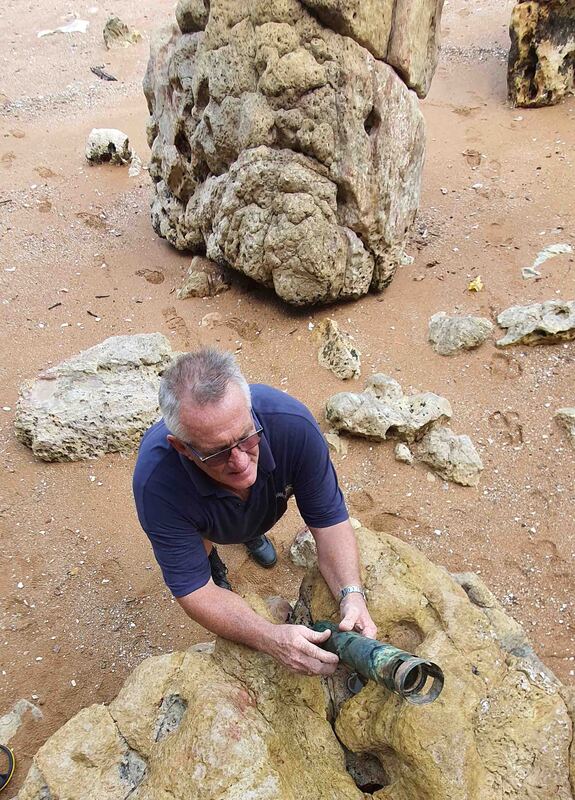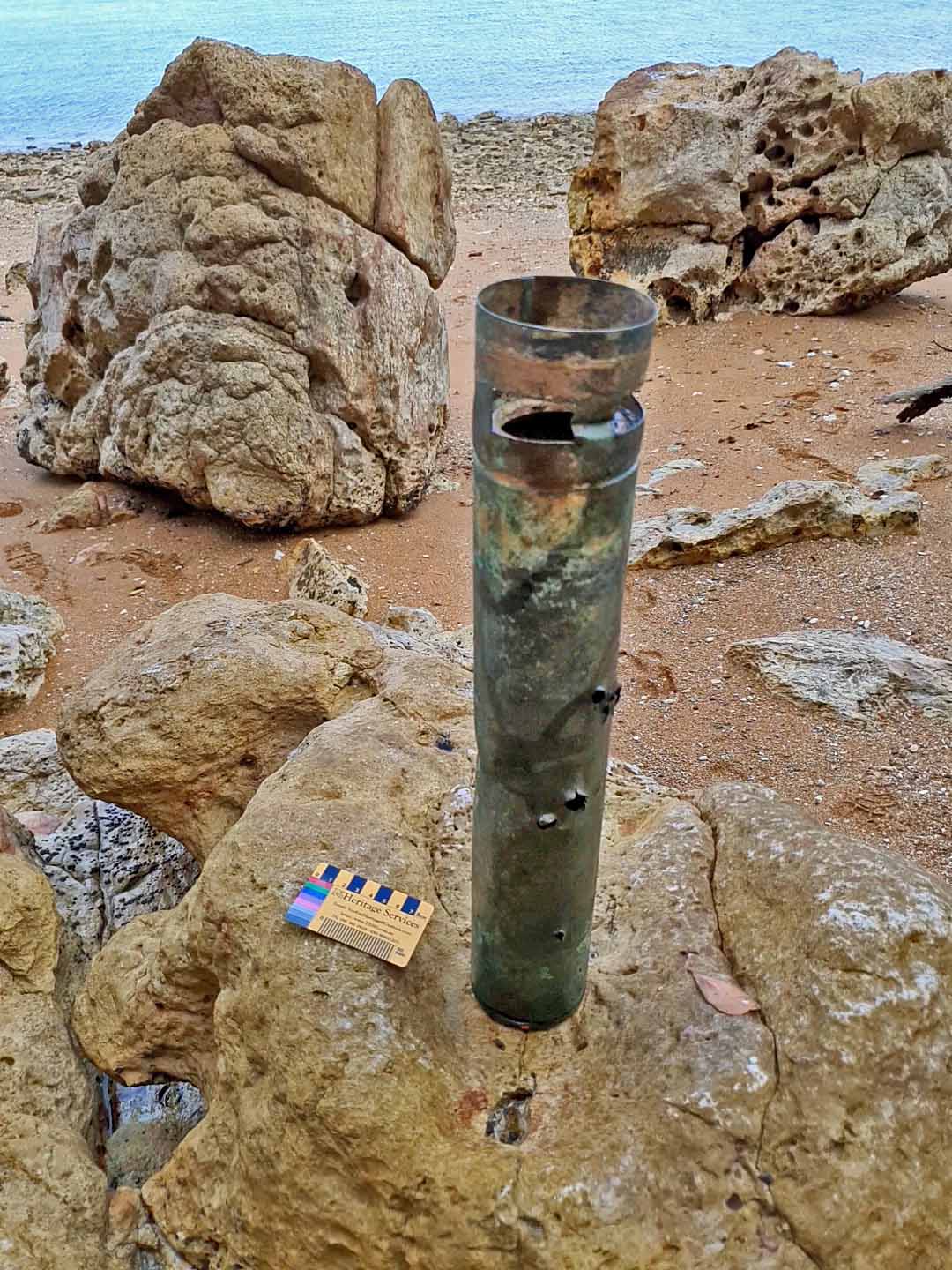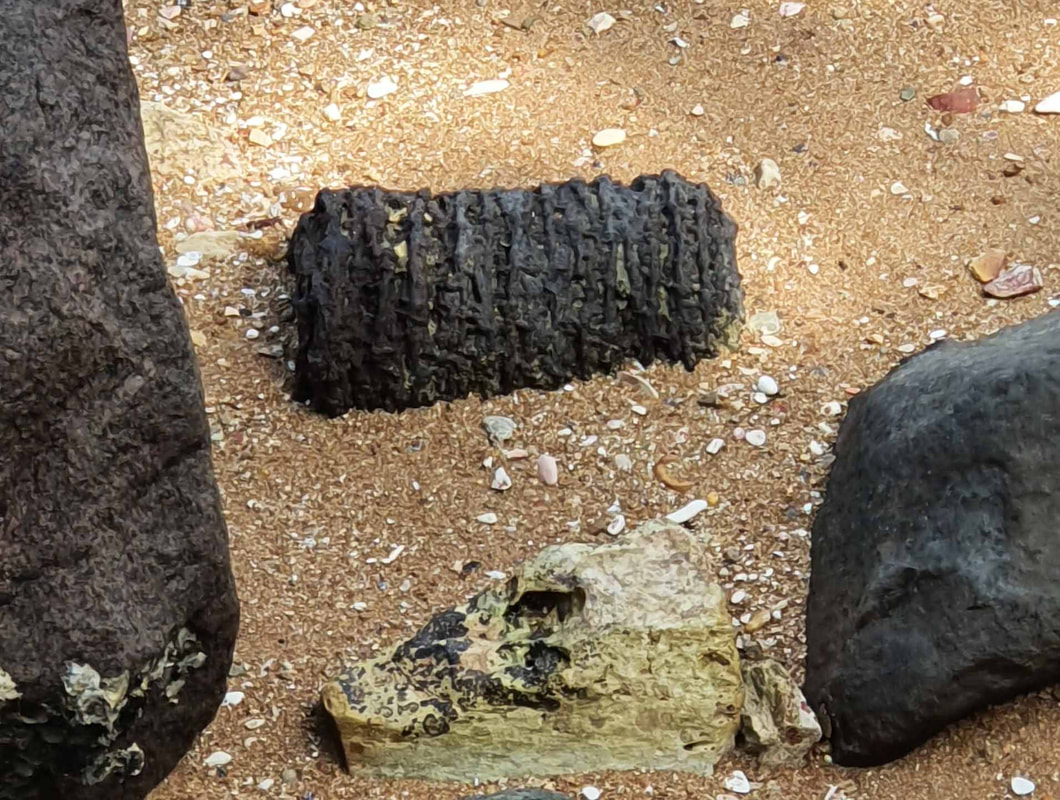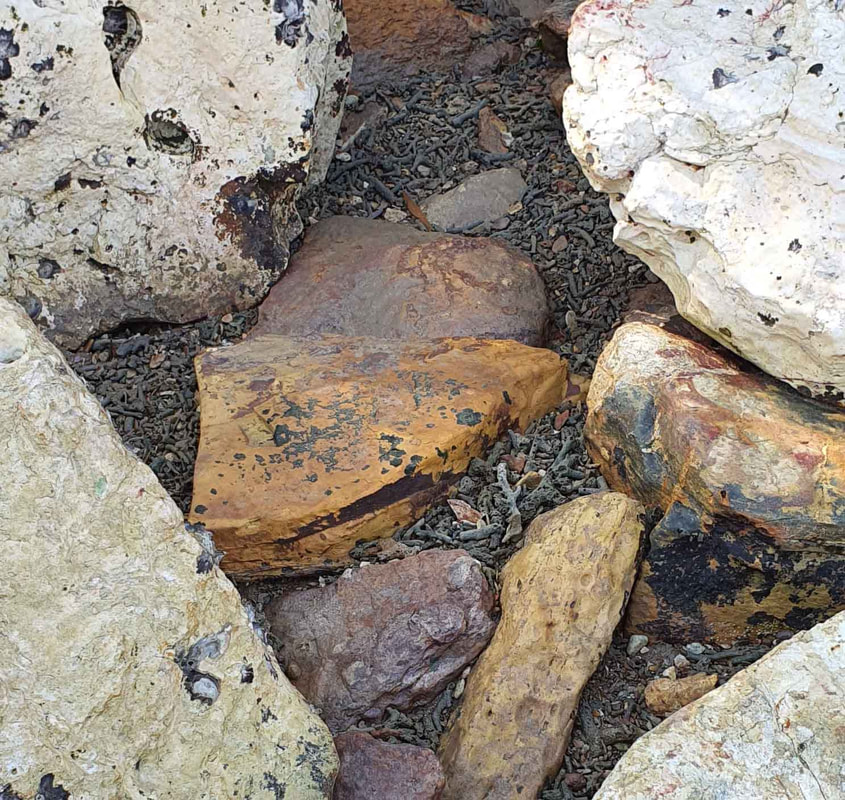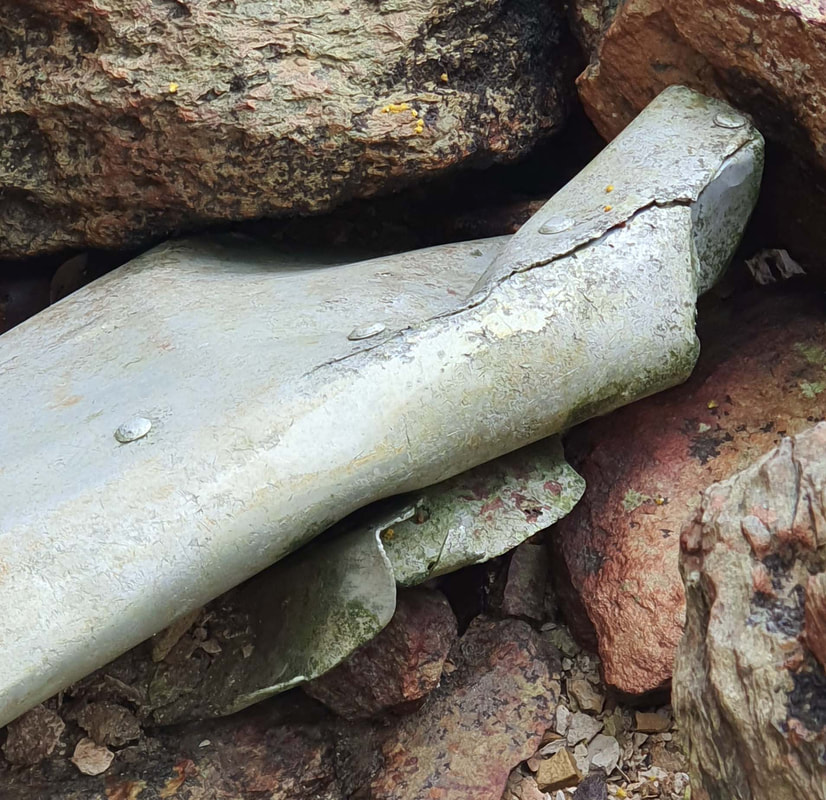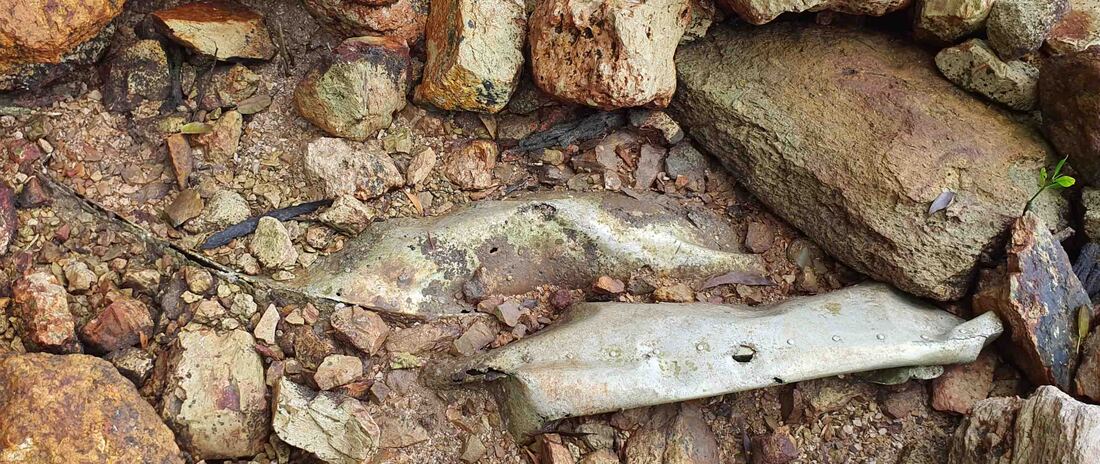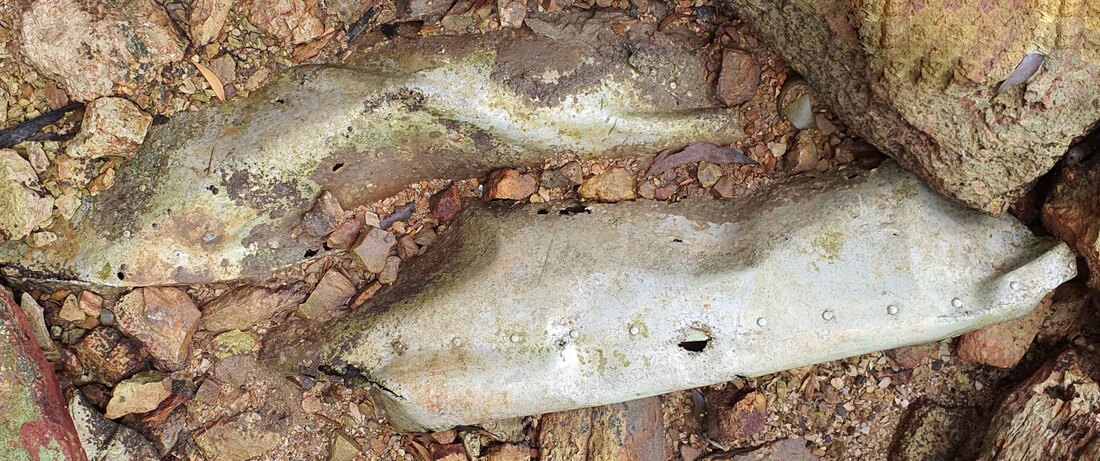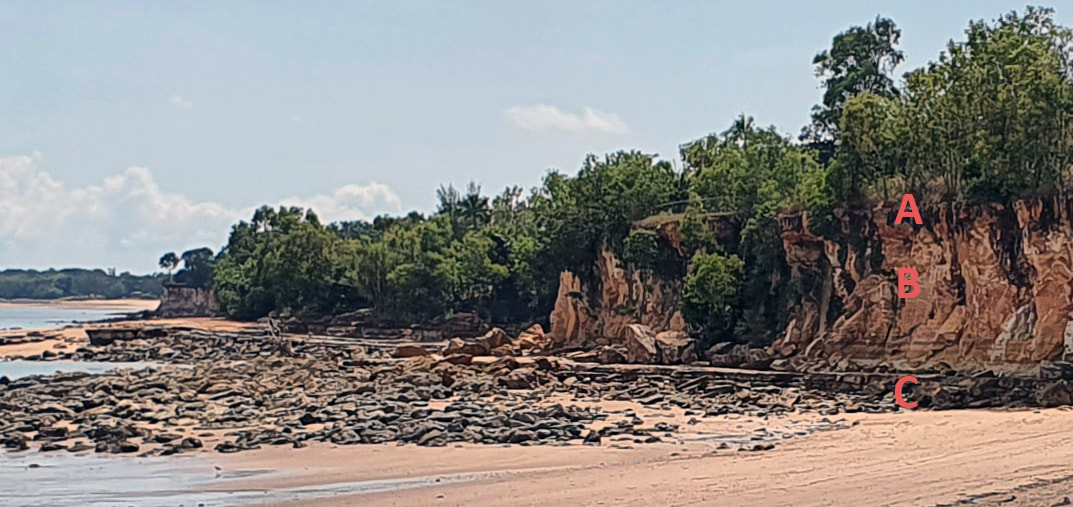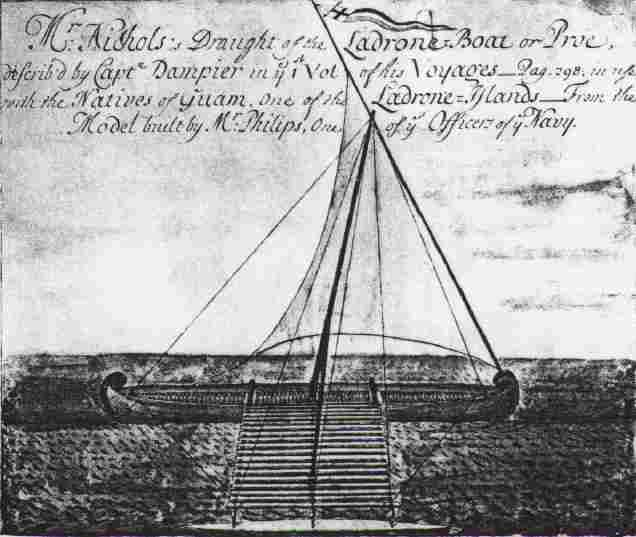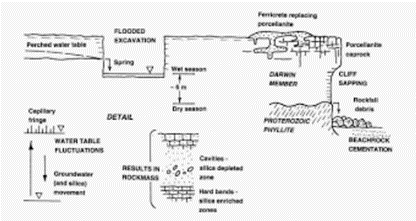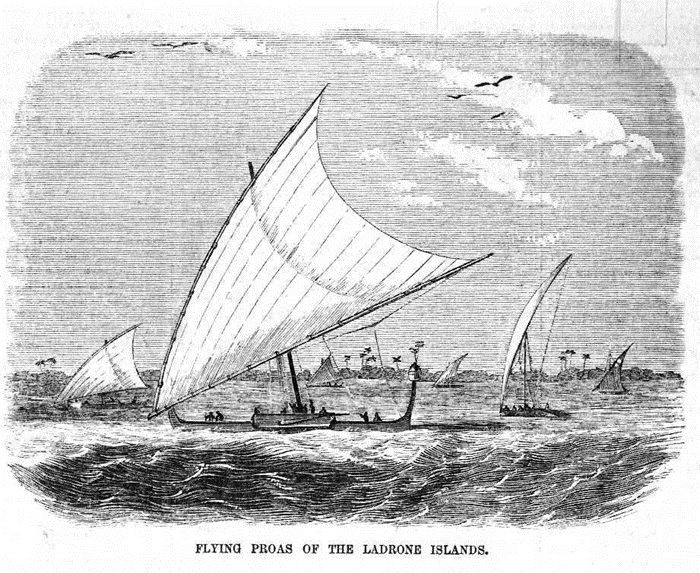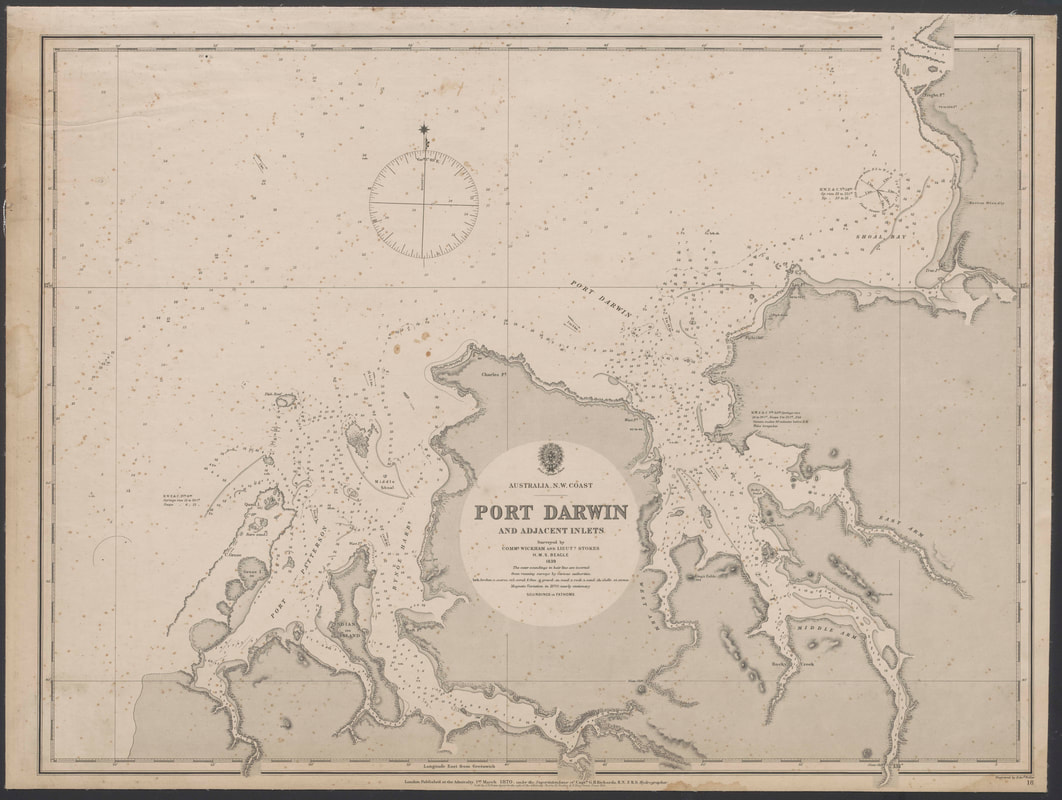THE BEAGLE WELL - PORT DARWIN 1839
The pursuit of the Beagle anchors cast off in the Victoria River in 1839 led to John Canaris discovering the Beagle Chart of Port Darwin which is marked with her anchorage and the first well dug in Darwin - the first anything come to that. This discovery confirmed calculations by MO following an expedition to Port Essington in 2017. Covid conspired to delay the search and prevented John from joining PastMasters MO, MH & TS and Chief Petty Officer Tony Thomas RAN on a site visit in mid-2023.
With the assistance of the Royal Australian Navy we were able to visit the site which is located within the Larrakeyah Barracks and Naval Base, on Emery Point, in Port Darwin. Upon entering the base we turned almost immediately to the left, off Nurses Walk, and descended by a very steep, sealed road to a level at which there is hardstanding with parking bays and a shed at the top of a groyne and an all-tide boat ramp which is used for training purposes. The Beagle Beach is to the west of the ramp and there is no ready access - it is necessary to scramble over the boulders below the shed and verandah - behind which, clinging to the cliff-face, is a very large Banyan Tree testifying to the continued water supply.
The yellow GE pins on the image above indicate the location of the Maltese Cross marked on the Beagle Chart of 1839 and immediately to the west is the pin indicating the site as calculated West of Port Essington from JL Stokes' journal.
The yellow GE pins on the image above indicate the location of the Maltese Cross marked on the Beagle Chart of 1839 and immediately to the west is the pin indicating the site as calculated West of Port Essington from JL Stokes' journal.
Assistance was sought from Peter Jolly who is renowned for his work with NT Water Resources over many decades. Peter spent several hours with us going through the survey of the beach. We discussed surface water penetration and were stumped by the minute description of what the men dug through to construct the 25ft well half way down a gully which could be approached by crawling on the stomach to reveal water in the bottom. This simply did not fit the presumption of a beach well - like a stone lined Macassan Well.
Peter observed that cliff gullies which channel surface water often create a point of easy access to the beach which in time turns into a path and it became apparent that, in this instance, the path has become a steep, sealed road down to a hardstand platform about 25ft above the hightide level - where the Beagle Well was dug in 1839. This explains the strata through which the men of the Beagle had to dig - perhaps assisted by powder charges. The depth of the well would still be above the hightide mark and the slowness of recharge simply reflects the late Dry season conditions in September.
So now we know where the Beagle Well is buried but - unlike Richard III - it is going to stay under a carpark for some time yet - unless subsidence offers the opportunity for further investigation. A commemorative plaque affixed to the spot would remind new ratings of those famous 'iron men in wooden ships' who passed this way in HMS Beagle - the most famous ship of science in history.
Peter observed that cliff gullies which channel surface water often create a point of easy access to the beach which in time turns into a path and it became apparent that, in this instance, the path has become a steep, sealed road down to a hardstand platform about 25ft above the hightide level - where the Beagle Well was dug in 1839. This explains the strata through which the men of the Beagle had to dig - perhaps assisted by powder charges. The depth of the well would still be above the hightide mark and the slowness of recharge simply reflects the late Dry season conditions in September.
So now we know where the Beagle Well is buried but - unlike Richard III - it is going to stay under a carpark for some time yet - unless subsidence offers the opportunity for further investigation. A commemorative plaque affixed to the spot would remind new ratings of those famous 'iron men in wooden ships' who passed this way in HMS Beagle - the most famous ship of science in history.
Discoveries in Australia
Stokes Vol. 2.I. - 9 Sept 1839
WELL AT PORT DARWIN.
The slow progress made in watering, from the soft nature of the soil in the bottom of the well, lengthened our stay considerably in Port Darwin. The water oozed through the sides, beginning to do so at a depth of twenty-five feet. The strata cut through varied considerably, in part consisting of ironstone mixed with a white kind of marl or pipeclay, for eight feet, then sandstone of a reddish colour and in a state of decomposition, with a darker kind of marl, in which were small bits of mica, for a depth of sixteen feet, the remaining portion of two or three being a sandy mud, apparently of the consistency of clay and of a light grey colour. The position of this well is in a small valley at the east end of the first sandy bay within Point Emery, in the centre of which the observations were made, placing it in latitude 12 degrees 27 minutes 45 seconds, longitude 1 degree 19 minutes 40 seconds, East of Port Essington.
The slow progress made in watering, from the soft nature of the soil in the bottom of the well, lengthened our stay considerably in Port Darwin. The water oozed through the sides, beginning to do so at a depth of twenty-five feet. The strata cut through varied considerably, in part consisting of ironstone mixed with a white kind of marl or pipeclay, for eight feet, then sandstone of a reddish colour and in a state of decomposition, with a darker kind of marl, in which were small bits of mica, for a depth of sixteen feet, the remaining portion of two or three being a sandy mud, apparently of the consistency of clay and of a light grey colour. The position of this well is in a small valley at the east end of the first sandy bay within Point Emery, in the centre of which the observations were made, placing it in latitude 12 degrees 27 minutes 45 seconds, longitude 1 degree 19 minutes 40 seconds, East of Port Essington.
VISITED BY NATIVES.
On the 24th a party of natives made their appearance on Point Emery. Their voices, shrill like those of all their fellows, were heard before they were seen. With these it was particularly so, though on all occasions the speaking, and hallooing of the Aborigines can be heard at a very considerable distance. They were found, when on shore, to be of the party we had before seen in Shoal Bay, with the addition of five strange men. All appeared actuated by the same friendly disposition, a very strong indication of which was their presenting themselves without spears.* Like most others on that coast, they had a piece of bamboo, eighteen inches long, run through the cartilage of the nose. Their astonishment at the size of the wells was highly amusing; sudden exclamations of surprise and admiration burst from their lips, while the varied expressions and play of countenance, showed how strongly their feelings were at work within.
(*Footnote. Speaking of natives appearing without spears, reminds me to mention for the information of future explorers, that their arms are always near at hand. They even trail them sometimes between their toes, a fact which travellers should ever bear in mind.)
It is very singular, and not very susceptible of explanation, that although they climb tall trees by merely resting their toes in a slight notch cut as they ascend, the natives will hesitate in alarm before looking over the edge of a precipice or height; it was, therefore, some time before this party could be induced to look down the well. At length by stretching their spare bodies and necks to the utmost, they caught sight of the water in the bottom.
On the 24th a party of natives made their appearance on Point Emery. Their voices, shrill like those of all their fellows, were heard before they were seen. With these it was particularly so, though on all occasions the speaking, and hallooing of the Aborigines can be heard at a very considerable distance. They were found, when on shore, to be of the party we had before seen in Shoal Bay, with the addition of five strange men. All appeared actuated by the same friendly disposition, a very strong indication of which was their presenting themselves without spears.* Like most others on that coast, they had a piece of bamboo, eighteen inches long, run through the cartilage of the nose. Their astonishment at the size of the wells was highly amusing; sudden exclamations of surprise and admiration burst from their lips, while the varied expressions and play of countenance, showed how strongly their feelings were at work within.
(*Footnote. Speaking of natives appearing without spears, reminds me to mention for the information of future explorers, that their arms are always near at hand. They even trail them sometimes between their toes, a fact which travellers should ever bear in mind.)
It is very singular, and not very susceptible of explanation, that although they climb tall trees by merely resting their toes in a slight notch cut as they ascend, the natives will hesitate in alarm before looking over the edge of a precipice or height; it was, therefore, some time before this party could be induced to look down the well. At length by stretching their spare bodies and necks to the utmost, they caught sight of the water in the bottom.
SURPRISE OF NATIVES AT THE WELL.
The effect upon them was magical, and they stood at first as if electrified. At length their feelings gained vent, and from their lips proceeded an almost mad shout of delight. Nothing perhaps could have more decisively shown the superiority of the white men to these savages, than our being thus able to procure this necessary of life from so great a depth, there being moreover no outward appearance of any. Perhaps their delight may be considered a sign how scarce is water in this part of the country. I should certainly say from the immense quantity each man drank, which was two quarts, that this was the case. A further corroboration of the extreme importance of this element to the Western Australian is, that a native, in describing a fine country, always opens his narrative by stating the important fact--plenty water.
The deep interest which in the natives always succeeds to the discovery of this necessary article, must strongly impress the explorer, who will ever afterwards look upon streams, even in other countries, with far different feelings from any before experienced. In no land does the presence of water more rapidly enrich the landscape, changing it from a thirsty-looking plain to a rich green spot, than in Australia, and it is in journeying through such a country, when one suddenly meets with a luxuriant valley, that the eye naturally dwells with delight on the changing scene, and the impression, not easily forgotten, clings to us even when far away. When gazing on the superabundant water that flows in almost every corner of the earth, we cannot but reflect on the scantily supplied Australian, nor fail to wish him a more plentiful supply.
The effect upon them was magical, and they stood at first as if electrified. At length their feelings gained vent, and from their lips proceeded an almost mad shout of delight. Nothing perhaps could have more decisively shown the superiority of the white men to these savages, than our being thus able to procure this necessary of life from so great a depth, there being moreover no outward appearance of any. Perhaps their delight may be considered a sign how scarce is water in this part of the country. I should certainly say from the immense quantity each man drank, which was two quarts, that this was the case. A further corroboration of the extreme importance of this element to the Western Australian is, that a native, in describing a fine country, always opens his narrative by stating the important fact--plenty water.
The deep interest which in the natives always succeeds to the discovery of this necessary article, must strongly impress the explorer, who will ever afterwards look upon streams, even in other countries, with far different feelings from any before experienced. In no land does the presence of water more rapidly enrich the landscape, changing it from a thirsty-looking plain to a rich green spot, than in Australia, and it is in journeying through such a country, when one suddenly meets with a luxuriant valley, that the eye naturally dwells with delight on the changing scene, and the impression, not easily forgotten, clings to us even when far away. When gazing on the superabundant water that flows in almost every corner of the earth, we cannot but reflect on the scantily supplied Australian, nor fail to wish him a more plentiful supply.
BLESSING OF WATER.
Naturally we are disposed to reflect but little on the great blessings of the most ordinary things. In the eyes of the civilized man, fire and water are matters scarcely worthy of thought; but it is the traveller who learns to appreciate how great blessings they are in reality.
An influenza appeared to be raging among the natives, all having the remnants of colds, coughing severely when we met them. Several attempts were made to induce them to come on board, but they proved vain. Sometimes, just as the boat was leaving the shore, they would enter the bow of it, as if about to accompany us; no sooner, however, was the boat in motion, than out they jumped, laughing and apparently delighted to deceive us, acting, in fact, exactly the part of noisy children.
Naturally we are disposed to reflect but little on the great blessings of the most ordinary things. In the eyes of the civilized man, fire and water are matters scarcely worthy of thought; but it is the traveller who learns to appreciate how great blessings they are in reality.
An influenza appeared to be raging among the natives, all having the remnants of colds, coughing severely when we met them. Several attempts were made to induce them to come on board, but they proved vain. Sometimes, just as the boat was leaving the shore, they would enter the bow of it, as if about to accompany us; no sooner, however, was the boat in motion, than out they jumped, laughing and apparently delighted to deceive us, acting, in fact, exactly the part of noisy children.
"IRRU, IRRU."
Our friendly intercourse with these natives sustained a shock, which at first threatened to annihilate it, but which fortunately ended, as it began, in smoke. One of the officers used a common flint and steel, in order to procure a light for his cigar; at this new mode of procuring fire all eyes were open--for doubtless they procure it only by means of friction--but when he proceeded to place the lighted cigar between his lips, and roll forth from thence a thick and perfumed cloud, fright took full possession of them, and exclaiming "irru, irru," with the arm extended, and a slight vertical motion of the hand, they darted off most unceremoniously, clambering up the face of a precipitous cliff, with extraordinary agility. Their cry of "irru, irru," and their manner of delivering it, were identical with those of King's Sound, under somewhat similar circumstances. In a few days they had forgotten their fright, and had returned to renew the friendly relations this little incident had interrupted.
HMS Beagle Departed Port Darwin on 26th September 1839 - which is 183 years ago in this the 9th month of September - must get out more.
Our friendly intercourse with these natives sustained a shock, which at first threatened to annihilate it, but which fortunately ended, as it began, in smoke. One of the officers used a common flint and steel, in order to procure a light for his cigar; at this new mode of procuring fire all eyes were open--for doubtless they procure it only by means of friction--but when he proceeded to place the lighted cigar between his lips, and roll forth from thence a thick and perfumed cloud, fright took full possession of them, and exclaiming "irru, irru," with the arm extended, and a slight vertical motion of the hand, they darted off most unceremoniously, clambering up the face of a precipitous cliff, with extraordinary agility. Their cry of "irru, irru," and their manner of delivering it, were identical with those of King's Sound, under somewhat similar circumstances. In a few days they had forgotten their fright, and had returned to renew the friendly relations this little incident had interrupted.
HMS Beagle Departed Port Darwin on 26th September 1839 - which is 183 years ago in this the 9th month of September - must get out more.
Beaufort Scale
By the 1830s under Francis Beaufort, there was a growing trend towards standardisation of features, symbols and abbreviations. As well as depicting the coastline and high and low water marks with accuracy, many other features of interest to mariners were also included, including rocks, sandbanks and wrecks, depths in fathoms, navigational aids such as lights, buoys and beacons, and the nature of the sea bottom for locating good anchorages. Most charts also included a compass rose with a magnetic north indicator, so that compass bearings could be easily traced using parallel rules for any transit on the chart. Most also included some indication of scale, either as a natural scale / representative fraction (ie. 1/31,706) or as a scale bar, a statement about the projection (usually the Mercator, for maintaining rhumb lines as straight lines on the chart) and included a border showing degrees of latitude and longitude.
Hydrographic Dept. of Admiralty 1954
Victoria Settlement Port Essington
|
MO calculation of the position of the Beagle Well - 1° 19’ 40” west of the end of the jetty at Victoria Settlement in Port Essington. There is a flat piece of ground at the base of the jetty which would be the nearest place to take sights for vessels anchored of Victoria. The quotation is in Stokes Vol. 2.I "The position of this well is in a small valley at the east end of the first sandy bay within Point Emery, in the centre of which the observations were made, placing it in latitude 12 degrees 27 minutes 45 seconds, longitude 1 degree 19 minutes 40 seconds, East of Port Essington."
Victoria PE to Well in Port Darwin
Lat. 11° 21' 50.64"S Long. 132° 9' 13.03"E Vari. 1° 19’ 40” Well 130° 49’ 33” |
Frazer F. Crawford c1872o
Emery Point Boat Ramp 1936
Beginning of Boat Ramp Emery Point - CDU eSpace - Charles ...http://espace.cdu.edu.au › view › cdu:13263
27 June 2012 — Title, Beginning of Boat Ramp Emery Point ; Type, Photograph ; Format, Digitial image/jpg ; Source, 1 photographic print : b. & w. ; 21.5 x 16.5 cm ...
27 June 2012 — Title, Beginning of Boat Ramp Emery Point ; Type, Photograph ; Format, Digitial image/jpg ; Source, 1 photographic print : b. & w. ; 21.5 x 16.5 cm ...
This ramp is visible in the adjacent image of Doctors Gully during WW2 which pre-dates the Larrakeyah Barracks ramp. It would now be within the Patrol Boat base at Nebraska Beach.
Finds
Having cleaned the finds and reviewed the day’s proceedings it is safe to say that we found no direct trace of the Beagle. Some wine bottle glass may broadly fit the 1839 date and odd pieces of lead and copper patching containing round nail holes may be from the period but probably later. Nothing with the signature ‘broad arrow’ Admiralty mark. Almost no modern rubbish – some fishing tackle and WW2 gear but generally very clean. The copper tube of a powder fire extinguisher - >1912 – that has either been used for target practice or got sprayed by the Japs as the rounds are 303 or thereabouts but seemingly of poor quality as some failed to exit the tube. There is a large piece of what appears to be riveted aviation aluminium tight in the rocks at the east end. I first thought allied drop tank but it is good quality and a sandwich section suggests aileron.
The geology is the same as the general area though the cliffs are heavily vegetated and there is considerable large tumble onto the beach.
The geology is the same as the general area though the cliffs are heavily vegetated and there is considerable large tumble onto the beach.
At the centre of the beach – beneath the Maltese Cross – there is an interesting deposit of broken coral from an unknown reef perhaps sorted by the adjacent sea walls – a heavy tumble of rocks – high cliff face out of which sprout two large paperbark trees parallel to the beach. There is considerable water here but no evidence of interference other than from a pair of Bush Chooks who have an active mound - a little to the east. Tim was impressed by this spot but the cliff is too high for drilling from above and the documents state that the sights were taken from the centre of the beach whilst the well (wells) was in a gully at the eastern end where the groyne and boat ramp are capped by a building & hard-standing area built on boulders from Mt Bundy and serviced by a steep, sealed road to the clifftop. At the back of the building there is a covered verandah area – behind which is a large Weeping Fig growing out of the cliff – proof of permanent water.
Riveted ~ Aircraft Aluminium
Geology & Hydrography
| darwin_geology.pdf | |
| File Size: | 1520 kb |
| File Type: | |

